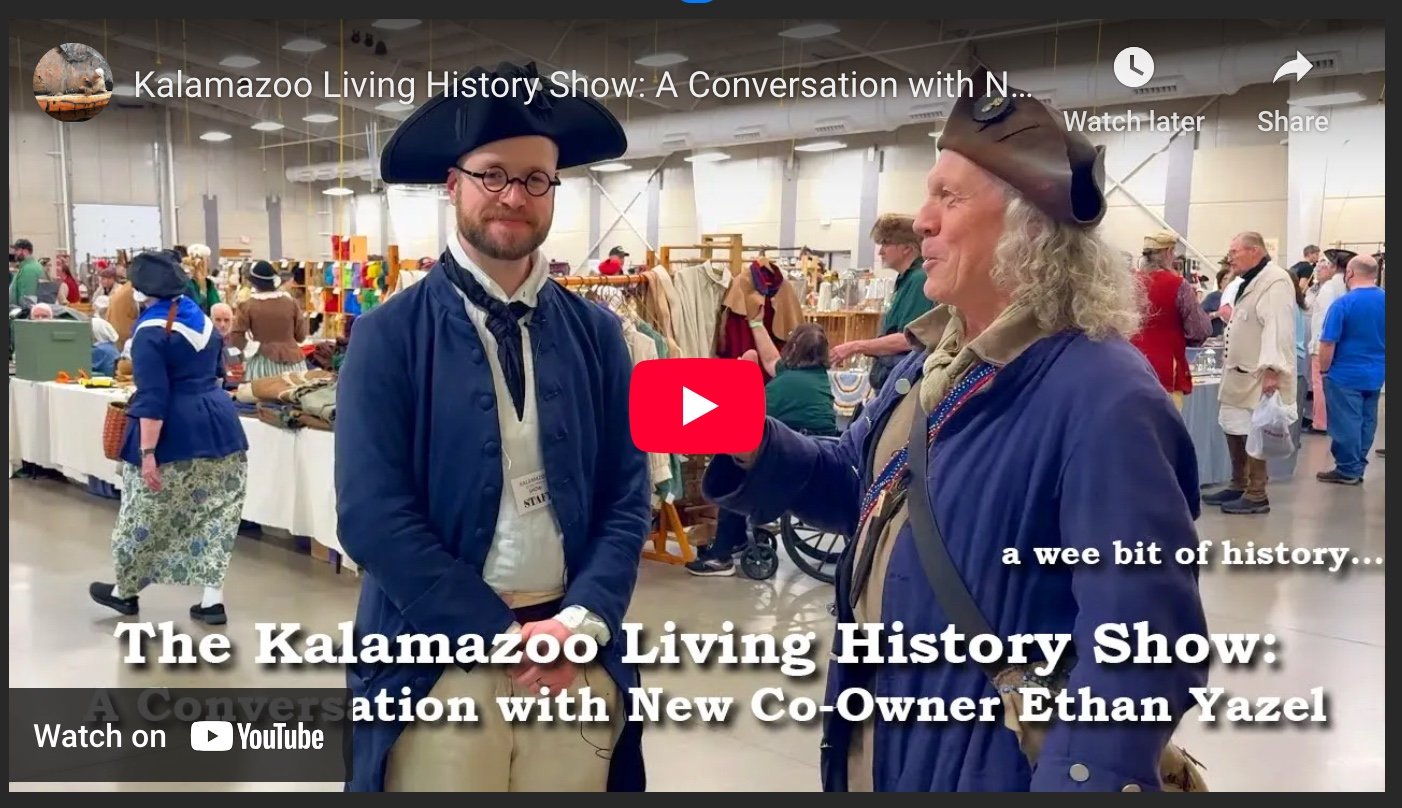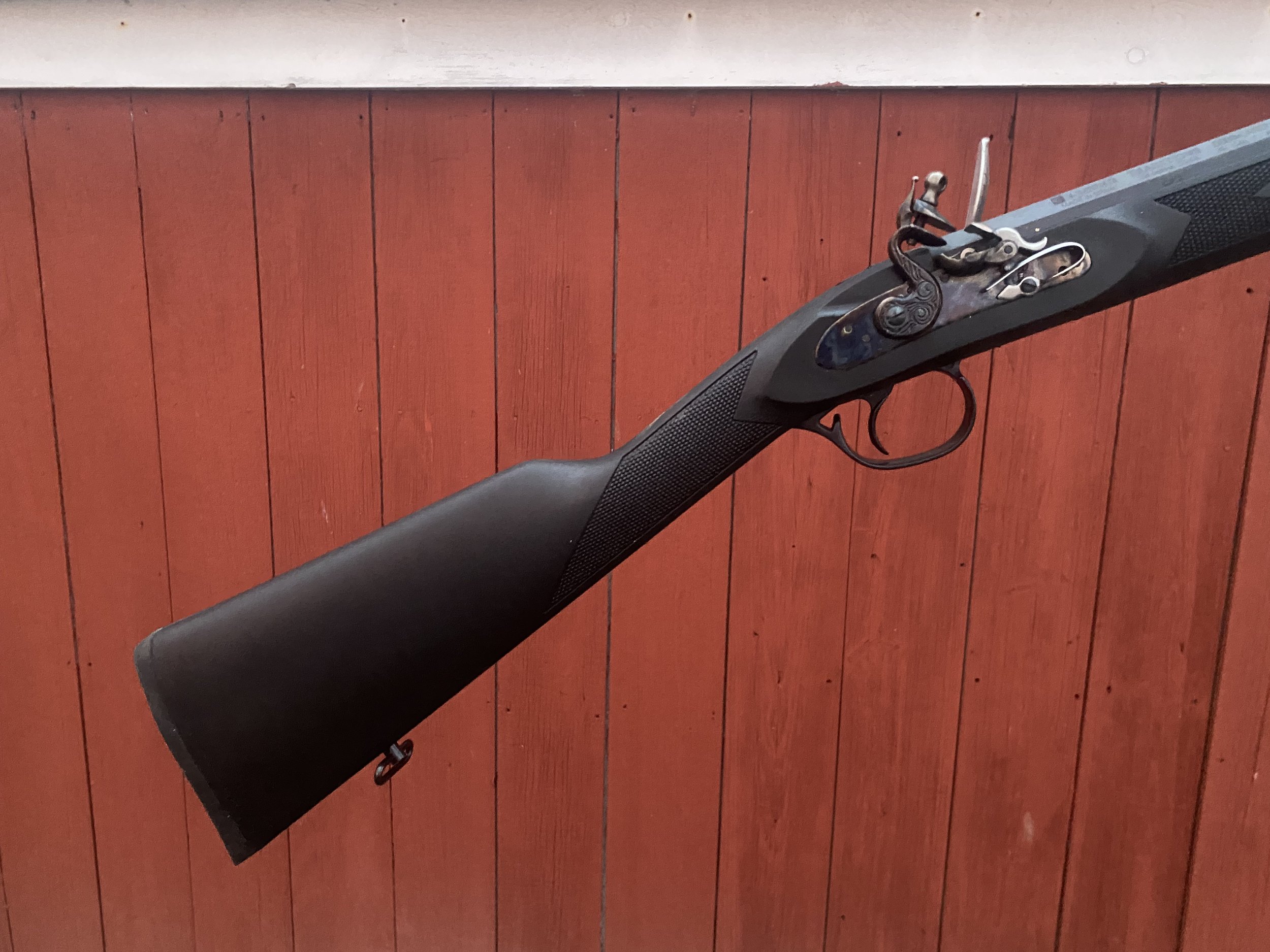Flintlock Pouch Set Up | .40 cal Kibler Southern Mountain Rifle Shot Pouch and necessary gear/ tools
In this week's video I take a moment to explain the contents of the shotpouch for my Kibler Southern Mountain Rifle. I recieve a lot of questions about my pouch/flintlock gear, and while this is in no way the best or only way to do it, it works for me. I hope you find it informative!
To start off here you'll see I have two bags here on the bench and one of them is my primary shooting bag. This is the one that always goes with my rifle I'm taking my rifle.
My Pouch Contents
.395 cast roundball
0.015 precut patches, strips of patching tied to the bag strap
Tied to the strap:
Turnscrew
Vent pick
Pan brush
55 grain river cane powder measure
2-3 spare flints
Brass priming horn by Gerry Rice
Chambers Multitool
Antler & Hickory Short Starter
I try to keep my bags as simple as possible. Some tools are duplicated across a bag so I can test and tweak things as I’m working. One of the best things about muzzleloading is the constant learning process. One week I can try something and the next week I can try something else. I don’t know that we are ever really done or finished in muzzleloading. There’s always another trail to follow.
VIDEO CHAPTERS
0:00 Shot pouch overview
1:39 My Shot Pouch & How I wear it
3:29 Shot Pouch Contents
11:31 "Possibles" Bag Contents
15:45 Thoughts on bags
Videos also available on Utreon
To get started first we're going to go through my main primary bag here this is a bag Handmade by my friend Eric Ewing this is a groundhog leather that Eric had and and worked with I think he tanned it himself but I'm not entirely sure there to put it on here you'll notice that it's sits pretty high up in my armpit here my horn will lay just above this it's very high in my armpit but when you look at traditional paintings from the 18th and early 19th century you're going to notice that they're hunting pouches or their shot bags however you want to pull this is up high in the crook of their arm this it really is a nice thing to have. It kind of looks uncomfortable you have to hike your arm up here to get down into the bag on occasion but if I'm moving through the woods and off the trail back in here where there's a lot of brush and a lot of undergrowth this isn't getting caught or snagged on anything because it's so high up and it's hard for it to droop down even when I have round balls in there.
If I'm crouching down and moving through some brush this can't really move a whole lot and I can kind of keep it in place with my arm as I'm moving which really makes it a utilitarian way to carry the bag.
Now of course depending on the amount of clothing I'm wearing right now I just have a sweatshirt and a shirt on underneath that so I'm pretty thin as far as clothing goesif I'm putting on my full historic kit where I might have a half an inch or more of fabric added onto this I can stretch this out with the adjustable strap here to make it more comfortable and so that I can keep this bag in my armpit as I'm depending on you know whatever I'm wearing now at a shooting match or something it might be more comfortable for you to carry this down closer to your hip just to make it easier to to access everything that's really you know what really up to you and what you want to use your Muzzleloader.
I want to start with what is hanging from the primary strap of my shooting pouch or my shot pouch here depending on who you talk to and what their historic influence and contemporary influences are you're going to see people with more and less hanging from the strap I just have a few primary tools here hanging from the strap of my shot pouch first I have a river cane powder measure this is kind of a traditional powder measure that would be set up you'll see a lot of these made out of bone or antler especially from a significant and deer that somebody has hunted. This is 55 grains so my friend Joe-D Baxter made this for me to go with the predetermined load that I had set up for my Kibler rifle. Next up here I have a little pan brush from Eric Ewing this is some groundhog that I believe that he tanned himself and it's just kind of a nice little Homespun style this is something I can use to get the priming powder out of my pan and kind of a clean and efficient manner and not have any dampness or any oils from my skin get into that pan if I need to rub or wipe any of that out so that's something that that can be used it's kind of up to you and your own personal preference if you really use a brush a lot so it's not necessarily something you need to have but it is something that's really light and doesn't really add a lot of weight or take up much space both of those tools are attached with a thin leather thong it's some veg tan leather I'm working on cutting up some of the bark tan hide that I have picked up already to kind of replace this for a more natural look but this wood traditionally age really nicely, I think personally you know the more I use my bag and more I use these tools this is a sliding vent pick I picked up from Jonah Cain it was made by Alan Hunter who's an Indiana maker. I like sourcing things from my friends and family and kind of the local area here that'll be kind of a theme you see across a lot of this equipment it just has a nice stiff piece of wire in here that slides in and out of this turned I believe it's Ash or Elm piece here to hold that together the more and more you shoot a Flintlock you're going to find you're going to need a vent pick especially if you're doing you know 15 plus shots you're going to want something that you can get in there and clean out that vent with. Also attached with jute here I have a tiny hand forward screwdriver and a piece of Oak for its handle just a simple tool so that I can tear down my lock if I need to I can get to my lock I can adjust my flint and kind of tweak some of the things on my rifle as I need to really simple tool but I think it's important to have this in your primary bag just in case you can also keep a lot of this stuff you know like your like your vent pick or your screwdriver in the pocket of your coat or your pants you know depending on what you're wearing if your period or traditional doesn't really matter you can carry a lot of this stuff in that pocket I like attaching this kind of stuff to the bag so that I can't lose it and I know that if I want to go out and shoot on a morning I can grab my bag and my horn I can grab my rifle and there's enough in there that I can go comfortably shoot for a couple hours and not really have to worry about anything going inside the bag now I haven't weighed my bag I know some guys out there will but I think this is probably less than two pounds really in total and it's packed full of lead balls.
Now again I like to keep my setup pretty light with my shot pouch I don't want it to be big and cumbersome I just want the essentials and there's even stuff in here that I don't necessarily need all the time and it's something I'm working through adjusting so that I can further refine my equipment just like you would at home you know none of this is final or perfect it's going to evolve through my whole lifetime.
The first thing I have in here is something that could definitely go into a coat pocket or a jacket pocket as I'm shooting but it's just my little short starter here if I'm shooting a tight load you know with a 395 ball and 15 or an 18 thousandths patching it's pretty tight and it gets a little difficult to really start that with my wood ram rod if I'm shooting kind of a 390 or maybe a 385 round ball not necessarily going for extreme accuracy just plinking in the morning or something I generally don't really need a short starter. It kind of it goes back and forth on historical accuracy in reference of the short starter but as far as contemporary muzzleloading goes it's nice and good to have one of these in your kit this is just kind of the base of a kind of a small antler here at the top with a stud for your super short starter and then there's a hickory ramrod section coming out the base to further short start that about six inches or so.
I have my little primer that holds kind of my priming horn but it's made out of out of brass here this was made by Gerry Rice, I picked this up on the American long rifles Forum, but it's just this nice little formed up primer you can see here it's got a chain lanyard where I could hook it to my bag. I like this so much I don't want to lose it so I've always just kept it in the pocket of my bag where it can't really get out. It has 4f priming powder in there. You don't need all the time I don't think to Prime with 4f a lot of guys will Prime with 2 and 3F just fine measuring some out from their horn but I like having a little 4f primer in here this is just enough to go out and have some fun.
If I'm shooting for a long time I'll pick up a bigger priming horn and stick it in my pocket.
Going on to the the tool aspect of your Flintlock kit this is one of the multi-tools made and sold by Chambers Jim Chambers Flint locks this is a neat little tool it is documented I think there's several examples of these across the accoutrements books, which is kind of neat it's it's something that looks like a little ax or a little Hatchet here but it is a useful tool we've got this little Hammer pole on the back if we need to work on a flint we have this blade out the front also you know to re-nap or work on a flint but it can function as screwdriver as well so what I've primarily used it for and then this handle section of kind of this little ax shape here actually unscrews and with that we have a little vent pick attached to the head here so you have kind of a backup vent pick in there if you need to and then the rest of this here will unscrew the vent pick from the head let's grow our threads back in there the rest of this becomes a loading Jag or a cleaning Jag for our rifle which is really neat and then we can turn this around re-thread it and we have a patchworm right there so if we've lost a cleaning patch down our bore we can shove this down there twist it grab our patch and pull it out and keep shooting.
Digging into the primary kind of small pocket in my pouch here I've got some spare flints for my rifle so I always carry a few of these there's a couple more bouncing around the bottom of the bag just in case something happens with my Flint it pops out I lose it or it's just busted up and I don't want to take the time to try to re-knap it I can just drop in a new Fresh sharp flint and keep shooting. It looks kind of messy here the large pocket here at the base on the my bag is just loose and in there I just have loose lubed patches and loose round balls for my Kibler, I can kind of differentiate as as Bob McBride has said in the past, between a ball and a patch with my fingers so I don't really worry about separating them.
I'm not the kind of guy that has a couple Tins in here and keeps them separate I just dump them all in the main pouch of the bag here and I can just fiddle around and grab one real quick.
Join the HCH to learn more about traditional horn work
Join the CLA today to learn more about longrifle artisanship
























![A Special Announcement from the Kalamazoo Living History Show [Press Release]](https://images.squarespace-cdn.com/content/v1/604384121f30ca562808d7a5/1732971295708-5VXFS28KHP4DJDIBE3GL/ILM_Template_001.00_00_00_00.Still023.jpg)


